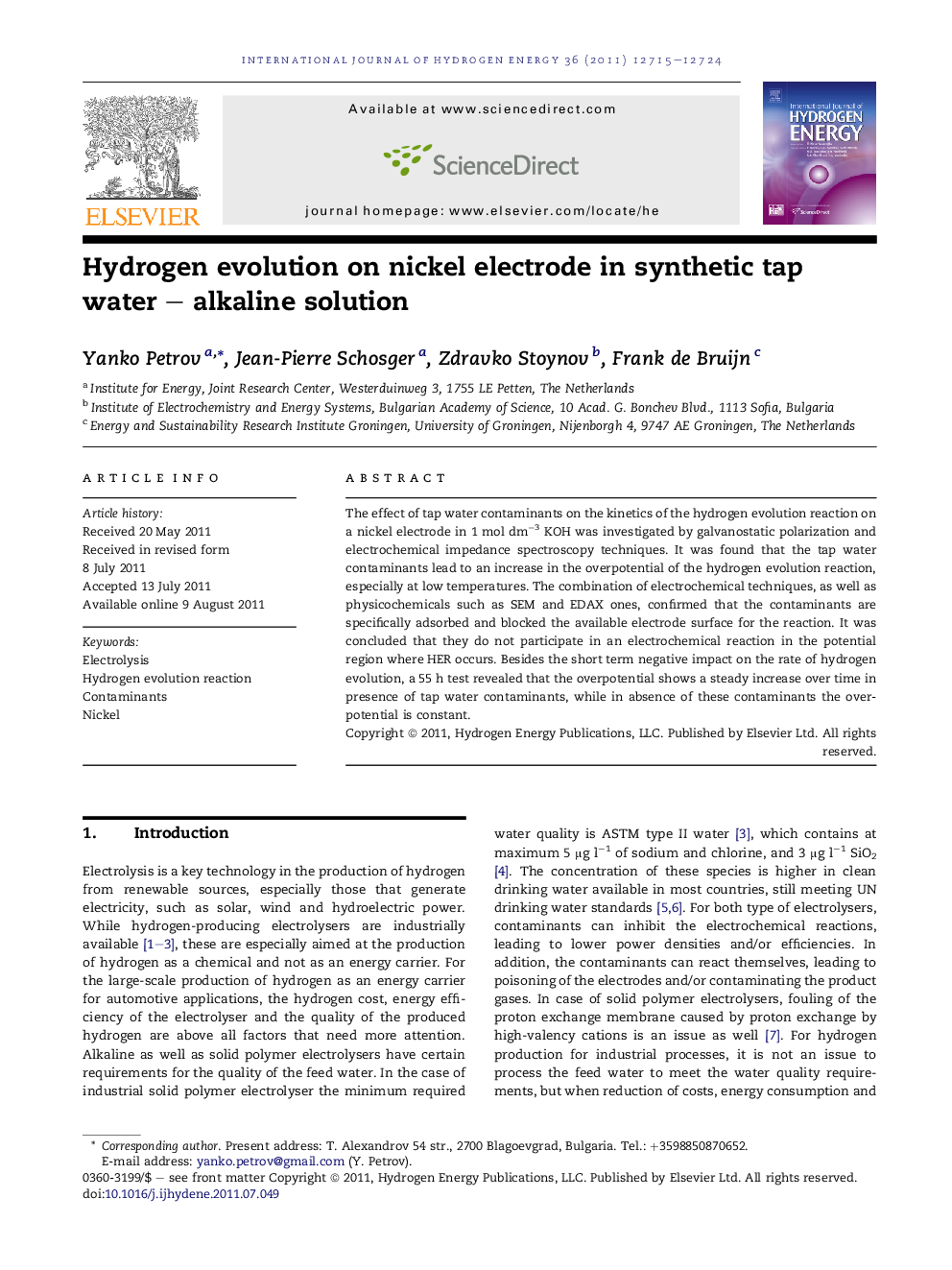| Article ID | Journal | Published Year | Pages | File Type |
|---|---|---|---|---|
| 1271936 | International Journal of Hydrogen Energy | 2011 | 10 Pages |
The effect of tap water contaminants on the kinetics of the hydrogen evolution reaction on a nickel electrode in 1 mol dm−3 KOH was investigated by galvanostatic polarization and electrochemical impedance spectroscopy techniques. It was found that the tap water contaminants lead to an increase in the overpotential of the hydrogen evolution reaction, especially at low temperatures. The combination of electrochemical techniques, as well as physicochemicals such as SEM and EDAX ones, confirmed that the contaminants are specifically adsorbed and blocked the available electrode surface for the reaction. It was concluded that they do not participate in an electrochemical reaction in the potential region where HER occurs. Besides the short term negative impact on the rate of hydrogen evolution, a 55 h test revealed that the overpotential shows a steady increase over time in presence of tap water contaminants, while in absence of these contaminants the overpotential is constant.
► Influence of the contaminants in simulated tap water on the hydrogen evolution. ► The mechanism of the reaction is the same as in purified water. ► Contaminants do not take place in the electrochemical reaction. ► Adsorption of anions on the electrode surface leads to increase of the overpotential. ► Gas phase product is the same as the one obtained from purified water.
